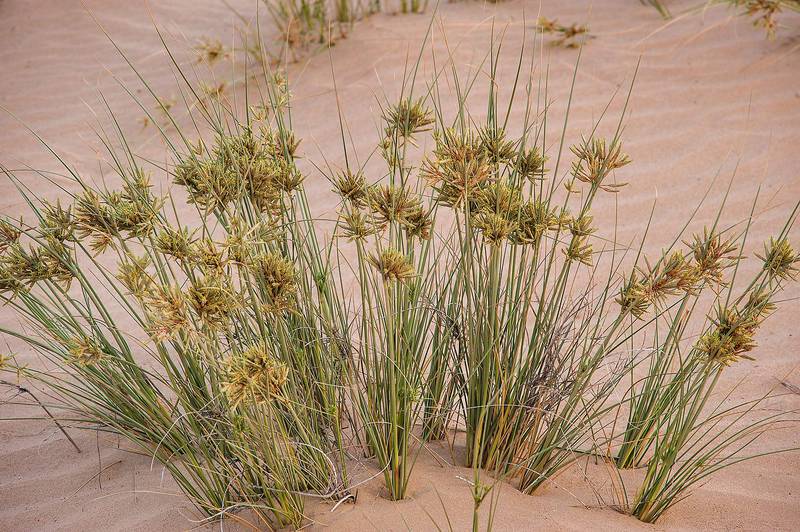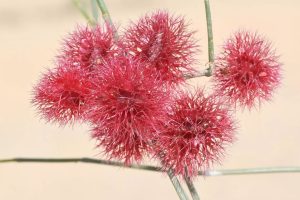Cyperus conglomeratus is a perennial sedge native to arid and semi-arid regions, including Kuwait. This resilient plant thrives in extreme desert conditions and plays a vital role in stabilizing sandy soils and supporting the desert ecosystem.
🌱 Key Characteristics
- Appearance:
- A tufted sedge with dense clusters of thin, upright stems.
- Stems range from 20 to 50 cm tall, with sharp, needle-like leaves that minimize water loss.
- Produces inconspicuous flowers in small, compact spikes.
- Habitat:
- Commonly found in sandy areas, dunes, and wadis.
- Prefers loose, well-drained soils and can tolerate saline conditions.
🌵 Ecological Importance
- Soil Stabilization:
The dense root system of Cyperus conglomeratus binds loose sand, preventing erosion and aiding in desertification control. - Biodiversity Support:
Provides shelter and food for small desert insects and serves as a base layer for other plant species to colonize. - Forage Resource:
Although not a primary grazing plant, it can be used by livestock in dry seasons when other resources are scarce.
🌠Cultural and Environmental Significance
In traditional desert landscapes, Cyperus conglomeratus is valued for its ability to withstand extreme conditions, making it a symbol of resilience and adaptability. It is also studied for its potential role in sustainable desert landscaping projects due to its soil-binding properties.
âš ï¸ Conservation and Challenges
- Threats:
Overgrazing and urban development pose risks to the natural populations of Cyperus conglomeratus. - Efforts:
Including this species in desert restoration and reforestation projects is essential to preserving its ecological role.
🌟 Interesting Facts
- Close Relatives:
Cyperus conglomeratus is part of the Cyperaceae family, which includes well-known sedges like papyrus (Cyperus papyrus). - Landscaping Potential:
Its tolerance to poor soils and minimal water needs makes it ideal for xeriscaping in arid regions.
In many parts of the Arabian Peninsula, including Kuwait, Cyperus conglomeratus has been used in projects to restore degraded sand dunes. Its rapid establishment and low water requirements have made it a cornerstone species for creating resilient desert ecosystems.



